A car that is approachable and intuitive as a toy
Things to keep in mind: Model cars are metaphors of real cars.
Great toys are approachable and intuitive. Toys can also provide a starting point for developing new designs related to human interaction, computer vision and robotics.
The concepts related to a toy can be utilized to improve natural communication between cars and humans. Kota Nezu, a former Toyota i-unit designer, created cars designed like toys that can be immediately recognized and understood. Nezu 's designs open the way for a visual language that connects playfulness and the pleasure of driving an intelligent car with automation and sensors.
Let's see what his car designs, model cars and human size robots have in common. The above picture of the 'MS CHASSIS' from the online catalogue of the toy manufacturer Tamiya.com shows the slick design of the chassis of an electric toy, the Astralster Mini 4WD. Toyota produced an electric car designed by Nezu which is based on this toy.
This blog entry shows several of his designs that are inspired by model cars.
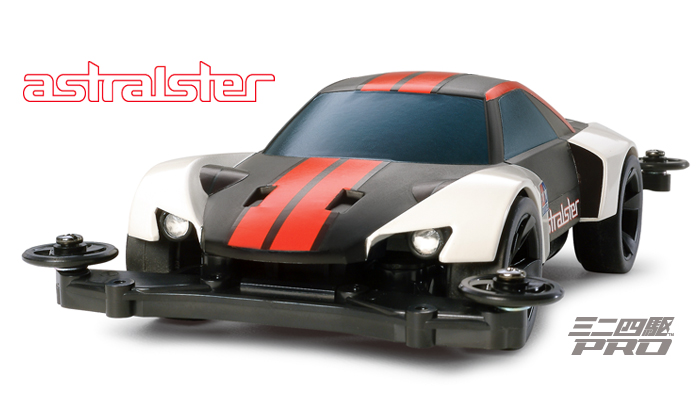 The Astralster Mini 4WD from Tamaya's online catalogue.
The Astralster Mini 4WD from Tamaya's online catalogue.
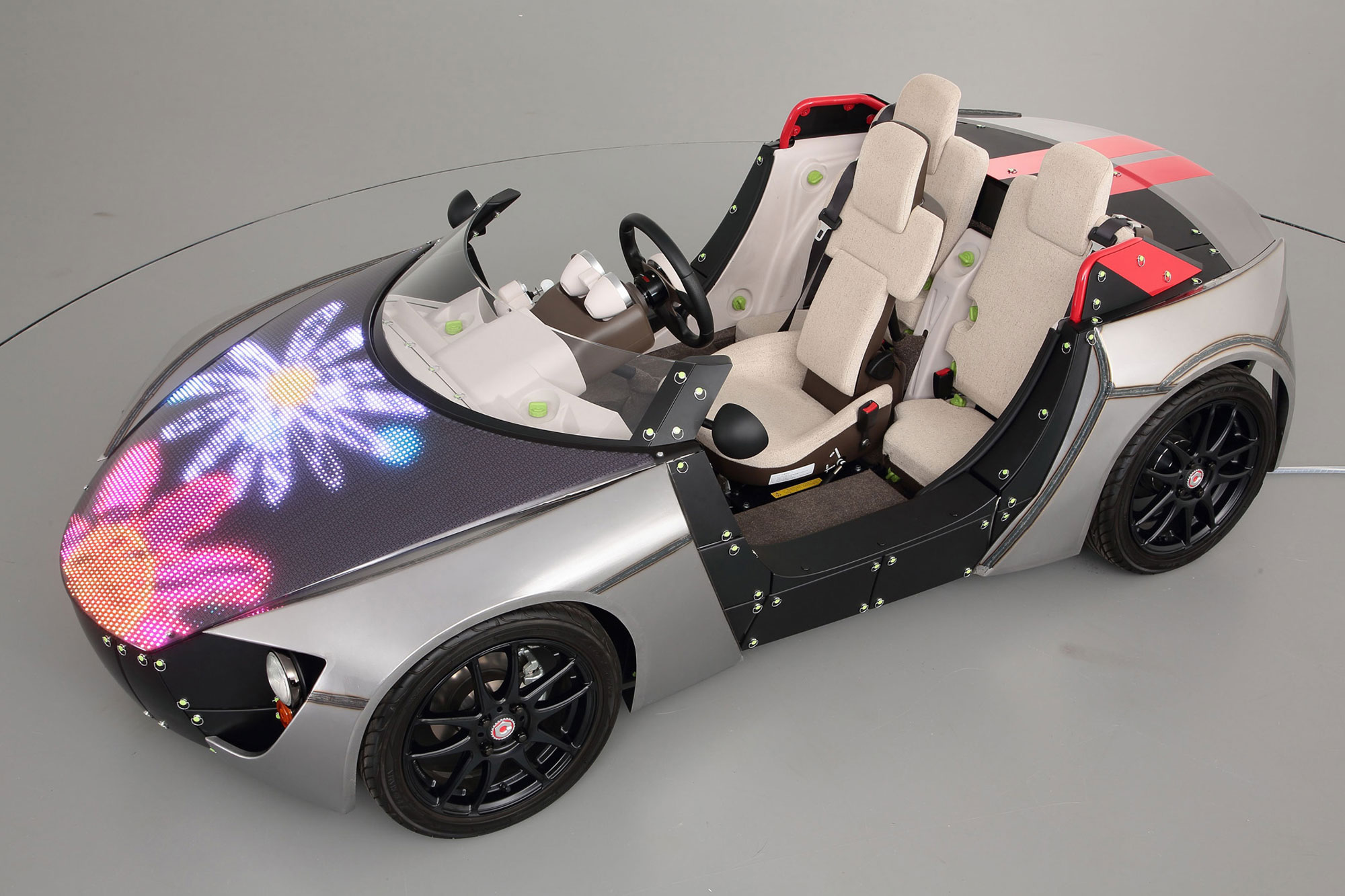 The Toyota Camatte57s designed by Nezu uses the same design components and visual identity.
The Toyota Camatte57s designed by Nezu uses the same design components and visual identity.
Photographic sources: "Toyota Camatte at the 2013 Tokyo Toy Show -10- Picture by Bertel Schmitt". Licensed under CC BY-SA 3.0
The LED display on the hod reinforces playfulness and identity of the Camatte57s Sports.
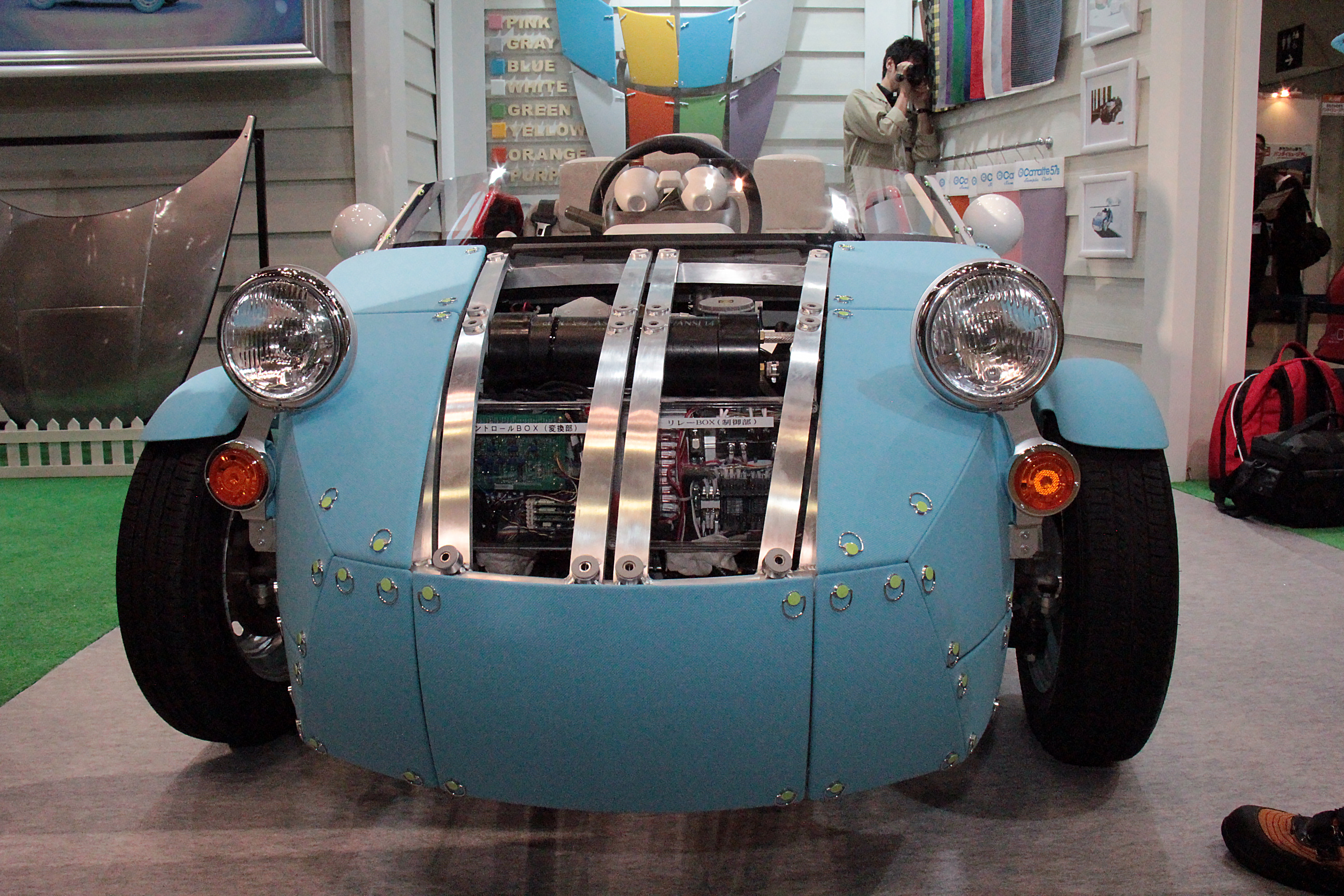 This 2013 version of the Toyota Camatte uses quick release fasteners that snap elements of the body on the frame. The Camatte cars designed by Nezu have different bodies mounted on the same frame. They share the underlying chassis and powertrain.
This 2013 version of the Toyota Camatte uses quick release fasteners that snap elements of the body on the frame. The Camatte cars designed by Nezu have different bodies mounted on the same frame. They share the underlying chassis and powertrain.
Photographic sources: "Toyota Camatte at the 2013 Tokyo Toy Show -10- Picture by Bertel Schmitt" by Bertel Schmitt (BsBsBs) - Own work. Licensed under CC BY-SA 3.0
The design of the cockpit of the car shows a playful interface similar to what can found in a mechanical toy. Elements of a standard cockpit design are visible on the left. Note the design of the green clip plastic rivet. Source Toyota's Camatte Lab.
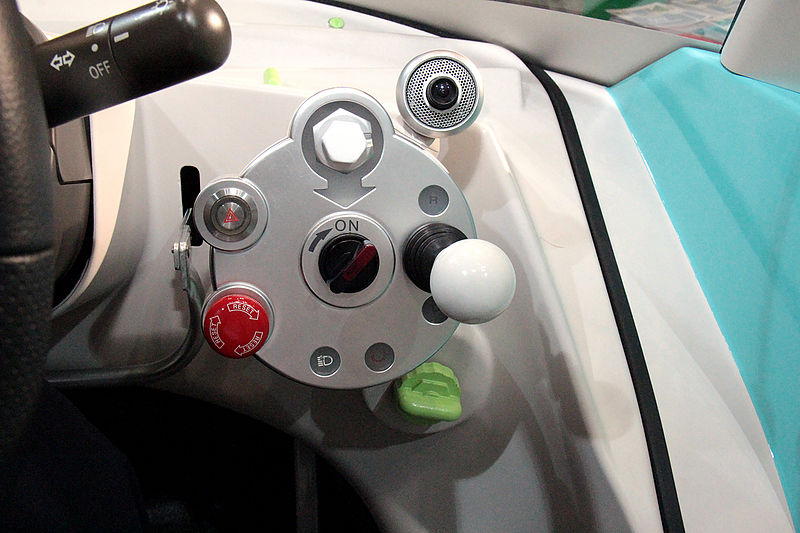 Photographic sources: "Toyota Camatte at the 2013 Tokyo Toy Show -10- Picture by Bertel Schmitt". Licensed under CC BY-SA 3.0
Photographic sources: "Toyota Camatte at the 2013 Tokyo Toy Show -10- Picture by Bertel Schmitt". Licensed under CC BY-SA 3.0
The body can be reconfigured with different layouts
of three-dimensional tiles snapped on the frame of the car. This is a cross betwwen Ikea's furniture design and Tamaiya's toy design.
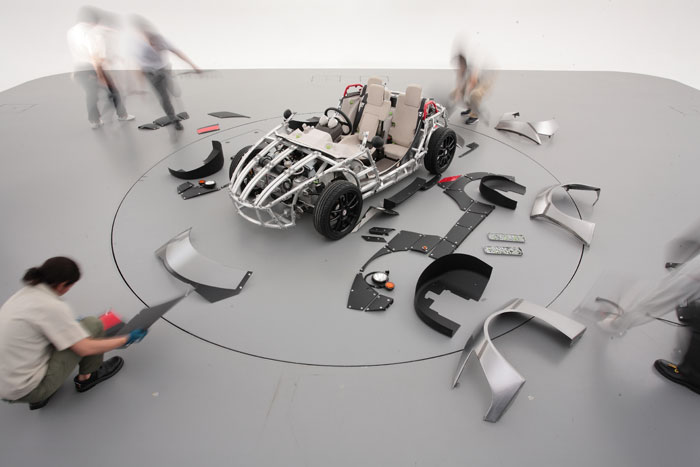
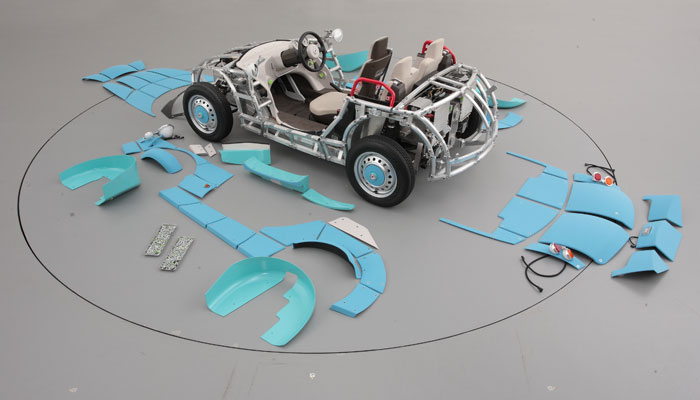 Pictures from "Ping Cars Vol.1: znug design’s “Dress-Up” Toyota for Kids" by Shogo Jimbo. Check PingCars, a serie of articles about alternative car designs.
Pictures from "Ping Cars Vol.1: znug design’s “Dress-Up” Toyota for Kids" by Shogo Jimbo. Check PingCars, a serie of articles about alternative car designs.
The Robo Car is an electric automated toy car.
The Robo Car was developed several years before the Camatte by Kota Nezu, at znug design, and by Takashi Shinohara, a former Honda engineer. who has since created ZMP. The location of the key components is similar to the Camatte car. Robo Car is a link on the evolution path between a car and a robot.
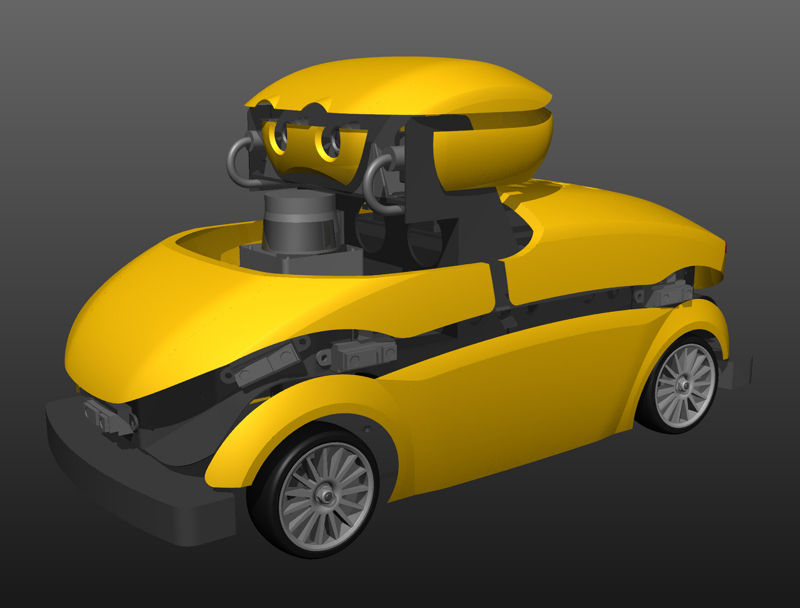 www.plasticpals.com
www.plasticpals.com
The reference to the Tamyia chassis is clearly visible on the following picture dated 2008, five years before the Camatte.
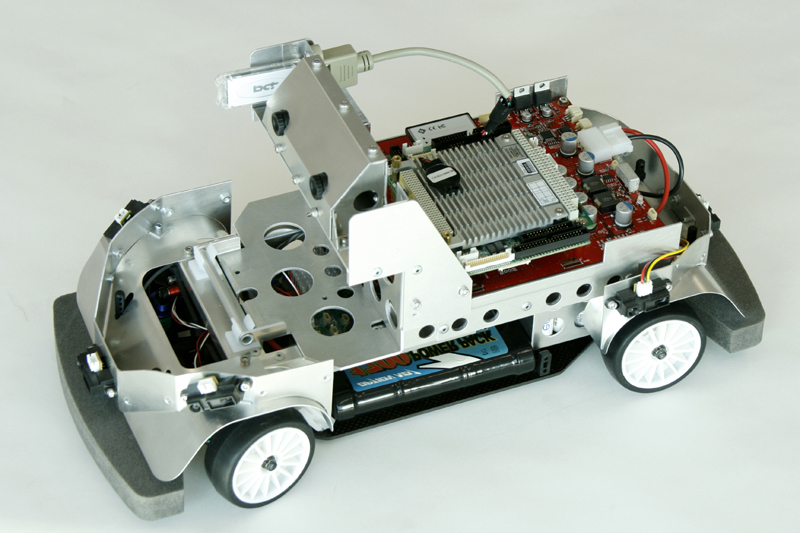 www.plasticpals.com
www.plasticpals.com
A language of shapes modeled with the computer vision system in mind.
Let's see how the Robo Car is functioning. The shape of the robot's head is visible on top of the body of the Robo Car. The body is segmented and connected by black joints that allow deformations and protect the sensors. The negative space of the joints is also designed for the computer vision system. We will find a similar design in Nezu's human-like robots.
Design of the automated car's head
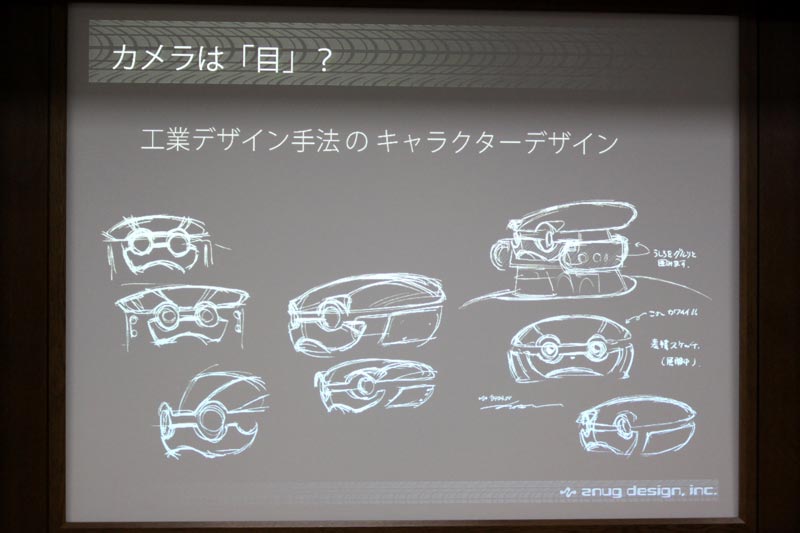 www.plasticpals.com
www.plasticpals.com
Sketches of the body of the Robo Car. The "head" of the Robo Car with the computer vision system and camera is sculpted like a helmet.
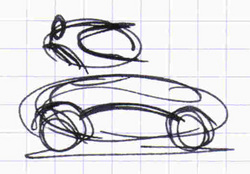
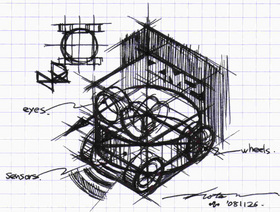
www.plasticpals.com
The picture below shows that the horizontal black joints are picked up by the computer vision system and provide a layer of information about the bounding box of the car and its orientation in space.
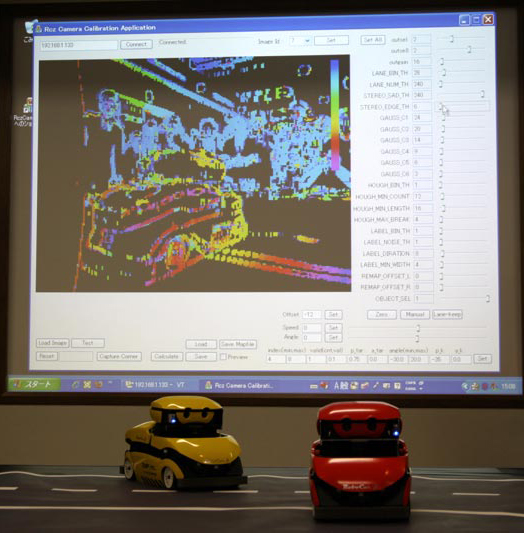 www.plasticpals.com
www.plasticpals.com
The image projected behind the cars shows a video of the red car rendered with yellow and red dotted lines. In this case, key elements of the design of the car, the shape of the head on top of the car and of the horizontal joints on the side of the body are clues for the computer vision system processing the orientation and direction of the car in space.
This video is recorded by the camera of the yellow car looking at the red car and processed by what could be an onboard computer vision system. The image of the audience is processed in blue color. The system also processes the lanes painted on the floor.
From car design to robot design.
Nezu's design of a human-like robot uses elements of visual language that can be found in the exoskeleton of insects. The evolution of the design starts with a layout of shapes covering different parts of the body. It evolves into three dimensional shields connected with black joints and red circles for the rotation of the joints. The yellow robot in a "wait" pose is ready for character animation.
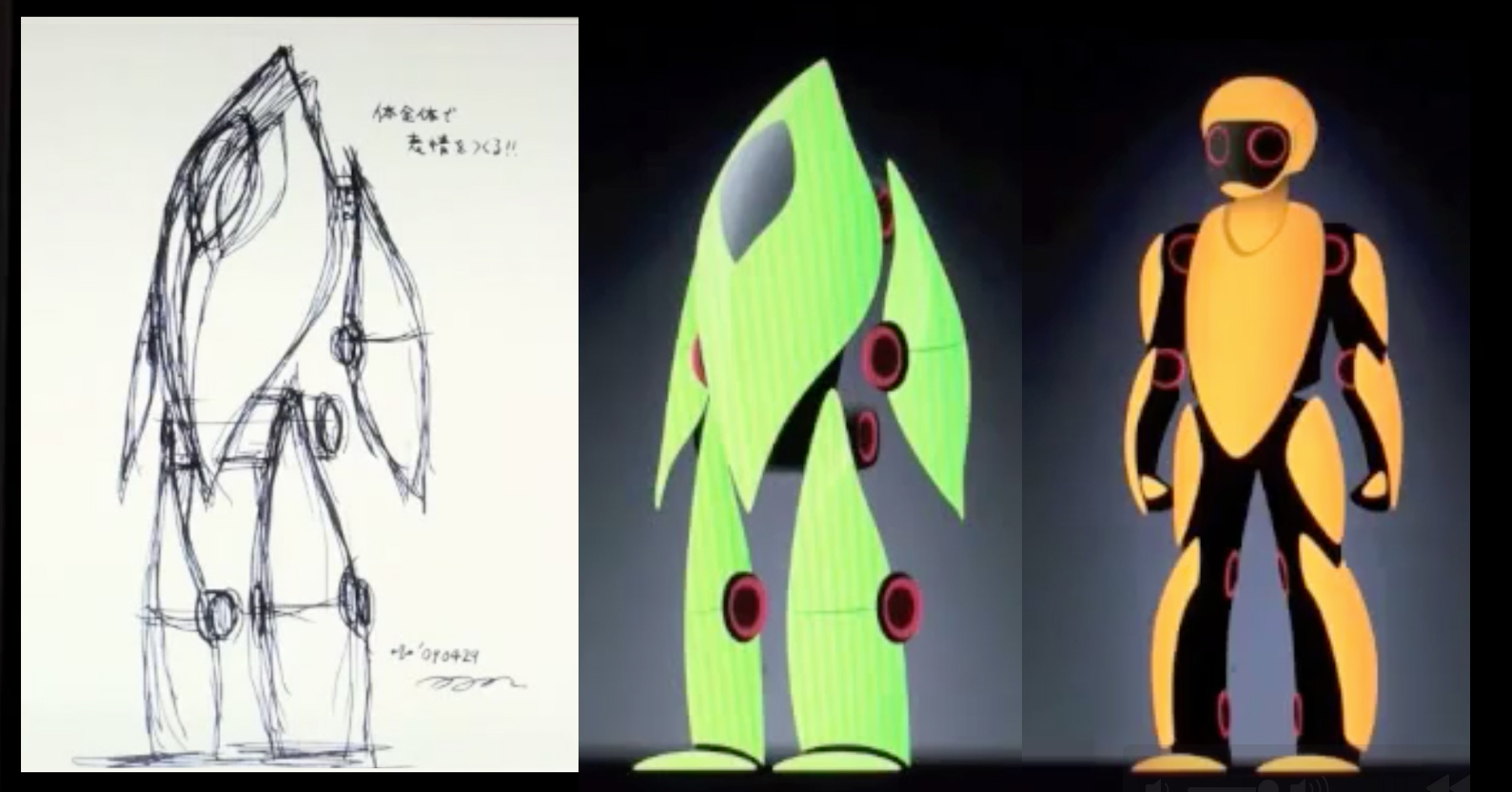
Illustrations from the znug design website
and screen captures from a You Tube video.
The black and white sketch with red outlines, shown below, is typical of character designs outlining visual connections between the segments. The red lines follow the "lignes de force" or the main visual connections between the shapes of the robots. 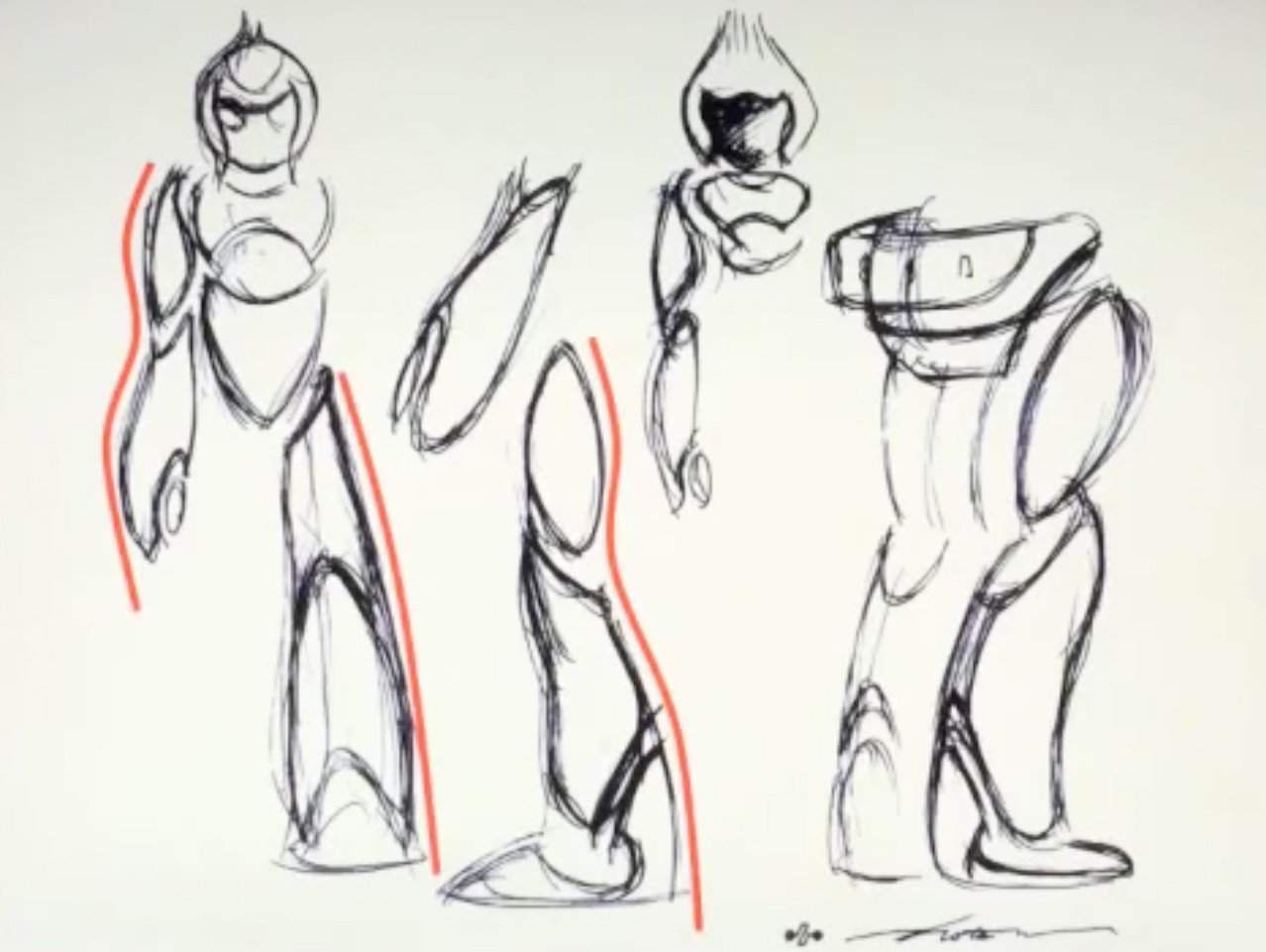
The invention of a new visual language.
The following prototype of the "e-nuvo HUMANOID" by znug design shows a new stage of evolution of the visual language of the robot's exoskeleton. The black joints inserted between the blue segments have specific shapes that can signal the direction, scale and orientation of the robot in space.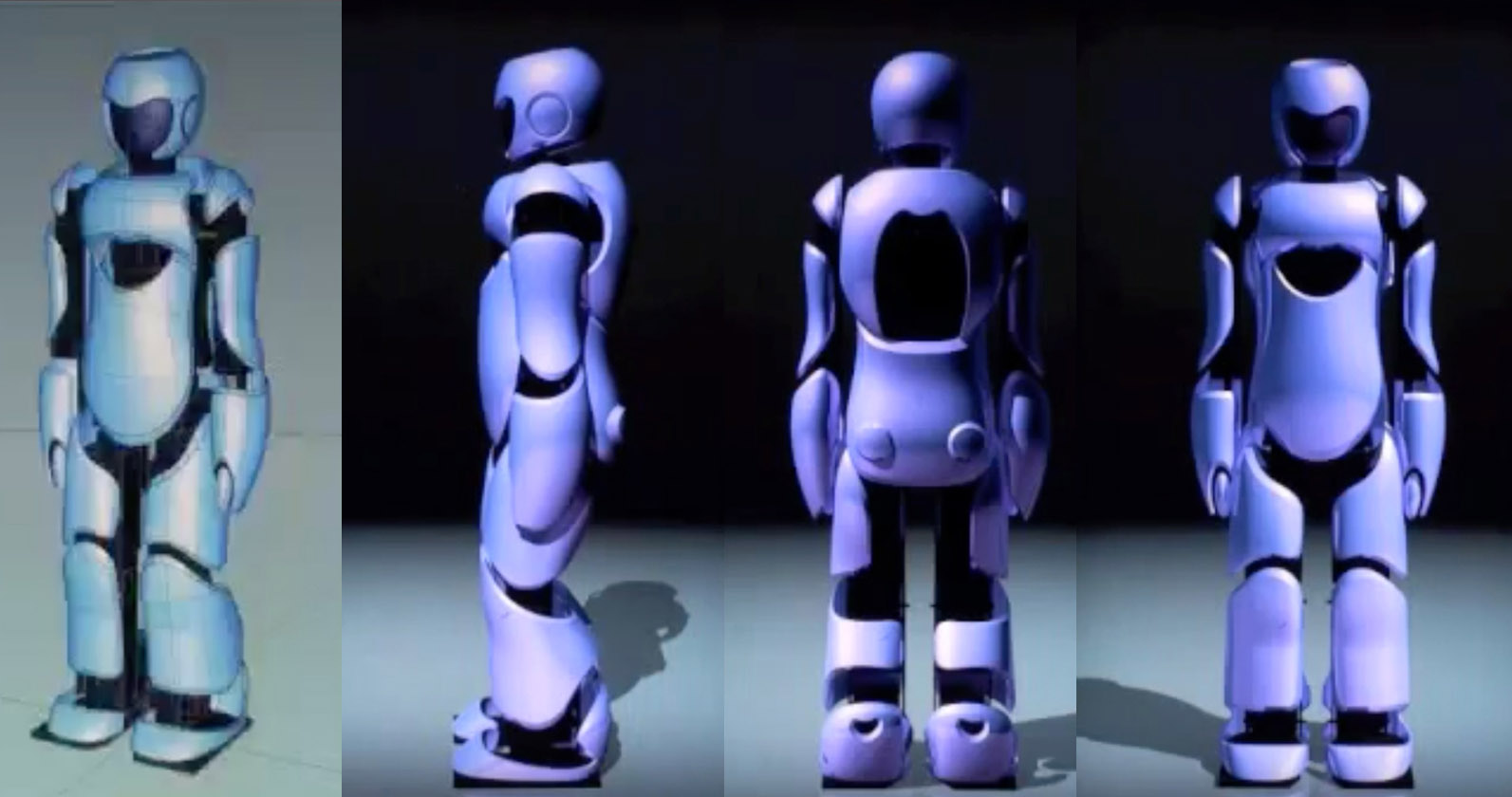
Photographic sources: Some illustrations presented in this blog entry are used for the presentation of research findings under the Fair Use Educational Uses. http://fairuse.stanford.edu/Copyright_and_Fair_Use_Overview/chapter7/7-b.html
"Toyota Camatte at the 2013 Tokyo Toy Show -10- Picture by Bertel Schmitt" by Bertel Schmitt (BsBsBs) - Own work. Licensed under CC BY-SA 3.0 via Wikimedia Commons - http://commons.wikimedia.org/wiki/ File:Toyota_Camatte_at_the_2013_Tokyo_Toy_Show_-10-_Picture_by_Bertel_Schmitt.jpg#mediaviewer/File: Toyota_Camatte_at_the_2013_Tokyo_Toy_Show_-10-_Picture_by_Bertel_Schmitt.jpg
"Paris Motor Show 2012 (8065386887) by Nan Palmero from San Antonio, TX, USA - Mondial De L'automobile Paris 2012 | Paris Motor Show 2012" Uploaded by FAEP. Licensed under CC BY 2.0 via Wikimedia Commons - http://commons.wikimedia.org/wiki/ File:Paris_Motor_Show_2012_(8065386887).jpg#mediaviewer/ File:Paris_Motor_Show_2012_(8065386887).jpg
"2012-03-07 Motorshow Geneva 4279" by Norbert Aepli, Switzerland (User:Noebu) - Own work. Licensed under CC BY 3.0 via Wikimedia Commons - http://commons.wikimedia.org/wiki/File:2012-03-07_Motorshow_Geneva_4279.JPG#mediaviewer/File:2012-03-07_Motorshow_Geneva_4279.JPG